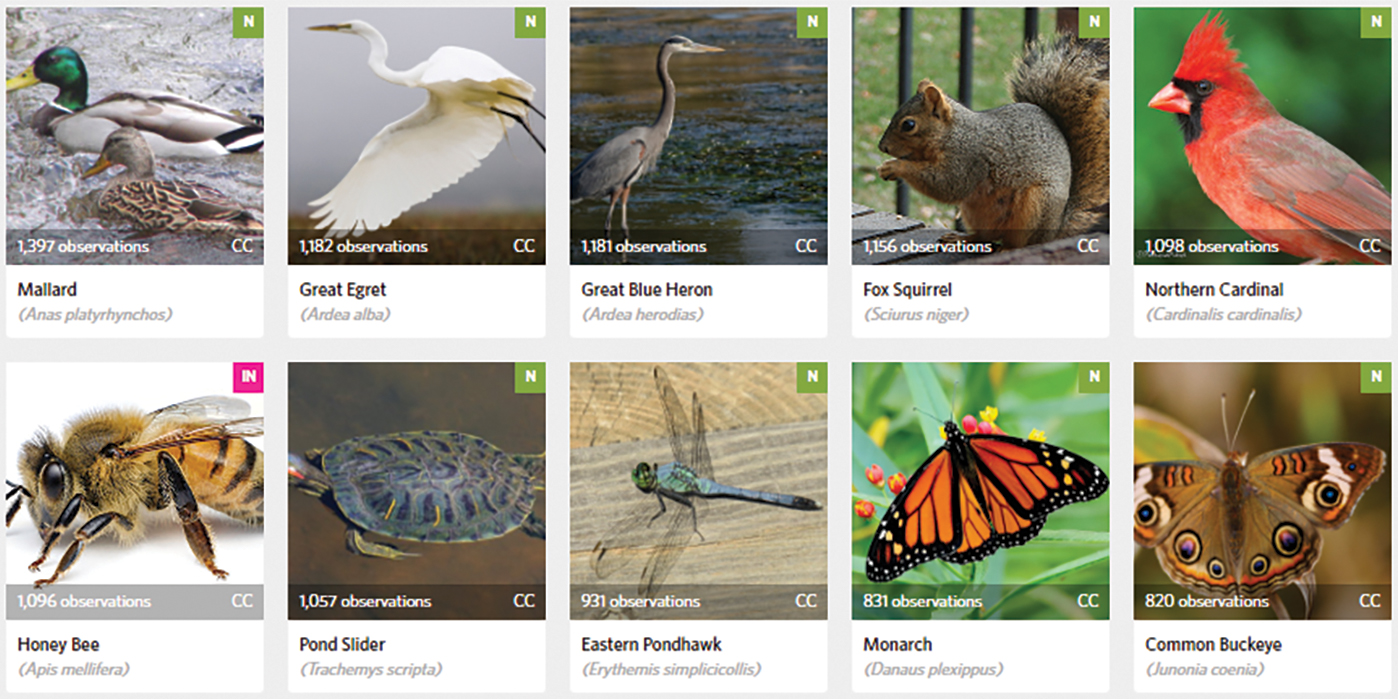Citizen Science
iNaturalist: Citizen Science for the Digital Age
The Science Teacher—April/May 2020 (Volume 87, Issue 8)
By Jill Nugent
The natural world becomes your lab when you implement iNaturalist in your 21st-century teaching toolbox. With this tool, students have the opportunity to contribute to real-world biodiversity research through a globally connected community dedicated to the study of nature.
Founded in 2008 as part of a graduate school project, the iNaturalist community now has over 750,000 participants around the world, and is a joint initiative of the California Academy of Sciences and the National Geographic Society. The main goal of iNaturalist is to connect people to nature, in addition to contributing useful global biodiversity data to support science. The opportunities for educators using iNaturalist are unlimited—student questions can drive explorations in nature, create community-engaged projects, analyze historical data, and much more (see Figure 1).

Local species guide created from City Nature Challenge data.
Project goal: Share observations of nature and biodiversity
Your task: Take photos of biodiversity and upload to iNaturalist
Science discipline: Life Science
iNaturalist works on all devices and helps to bring real-world science into your classroom. Getting started with iNaturalist is easy, as the platform is user friendly and intuitive to use (see “Project Home”). Students will be interested to learn about the artificial intelligence (AI) technology built into the iNaturalist platform—from historical crowdsourced identifications, AI technology can now suggest an identification for an organism by analyzing pixels in the observation’s image. The accuracy of the identification suggestions are remarkable.
Additionally, when students submit observations that are Research Grade (Research Grade is an observation with a species identification agreed upon by multiple individuals) the data are shared with the Global Biodiversity Information Facility (GBIF), which is a database often consulted (and cited) in biodiversity research. Students therefore serve as contributors to global biodiversity research. The iNaturalist platform brings together nature, science, and technology in a way that is sure to ignite interest and curiosity in your students!
Materials you will need:
- a digital camera
- smartphone, mobile device, or laptop to upload your photos of biodiversity to iNaturalist
Spring is a wonderful time to engage learners in citizen science. Students will enjoy exploring and documenting organisms emerging from their winter state. A number of global citizen science events take place this spring including: Global Citizen Science Month, the City Nature Challenge, and the 50th Anniversary celebration of Earth Day.
The City Nature Challenge, a global bioblitz, takes place during the week of Earth Day, during April’s Global Citizen Science Month. The challenge uses the iNaturalist platform and has an open source Educator Toolkit available (See ‘Helpful Project Links’ and ‘Additional Resources’). Students can get involved and make a difference through locally engaged, globally connected citizen science. The global scope also provides a way for students across the world to take action on U.N. Global Goals, including targets related to Sustainable Development Goal (SDG) 15, Life on Land. With iNaturalist you can foster student curiosity about the natural world, accelerate scientific discovery, and contribute to real-world biodiversity research.
iNaturalist at a glance
![]()
When: Year-round, anytime.
How: Set up a free account with iNaturalist and you will be ready to begin uploading observations; visit the iNaturalist Getting Started page for a step-by-step guide on how to upload observations from any device, https://www.inaturalist.org/pages/getting+started
Where: Global.
Time needed: Variable, as much or as little time as desired.
Special equipment needed: Smartphone or digital camera.
Cost: Free.
Contact for more information: See the iNaturalist Help Page, https://www.inaturalist.org/pages/help
Safety: As with any science lab, classroom, or field activity, always ensure that you are following recommended safety practices; for more information on safety in the science classroom visit www.nsta.org/safety.
Jill Nugent (jillfnugent@gmail.com) teaches science online, engages educators in citizen science experiences for the classroom, schoolyard, and beyond, and serves on the SciStarter Team. Follow SciStarter on Twitter: @SciStarter
Citizen Science General Science Instructional Materials High School


